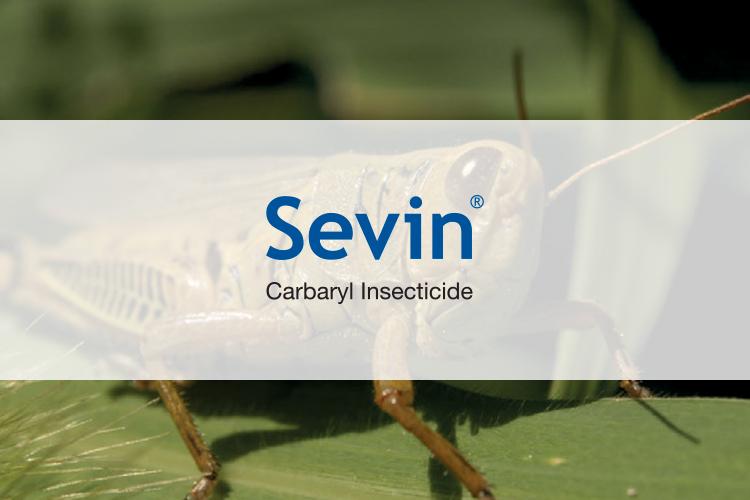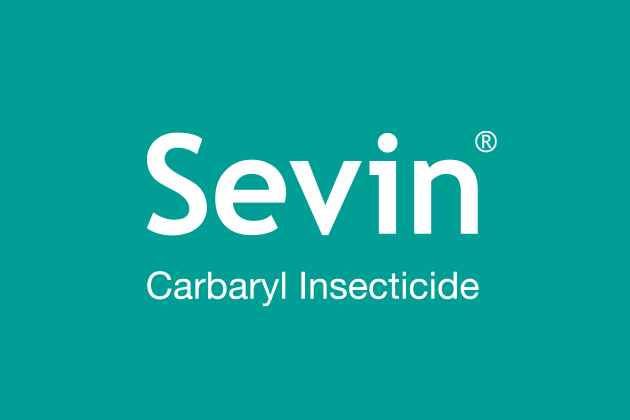Prevent Losses in Rangeland and Pasture from Grasshopper Damage

Grasshopper Control Technical Information Sheet
Introduction
Grasshoppers are damaging pests to rangeland, pasture and cropland. Not a year passes without some economic loss to rangeland and crops due to grasshoppers. In rangeland and pastures, grasshoppers actively compete with cattle for available forage.
Even light populations of grasshoppers (six to seven grasshoppers per square yard) on 10 acres of land can consume as much as a cow. During outbreaks, there may be 30 to 60 grasshoppers per square yard. With grasshopper populations this high, cattle have to be moved to non-infested rangeland and pasture or sold early.
Most scientists agree that the severe outbreak of grasshoppers is related to temperature and rainfall conditions. During cool and rainy weather, grass is usually abundant and consumption by grasshoppers can be tolerated. In hot, dry weather, when grass is scarce, the amount consumed by grasshoppers becomes important. Hot weather causes grasshoppers to develop more rapidly and to consume vegetation at a faster rate. In addition, dry weather may help to reduce the natural infection of grasshoppers with insect disease organisms, such as fungal pathogens.
While economic loss due to grasshoppers occurs more frequently on pasture and rangeland, cropland may become endangered during heavy rangeland infestations. Large populations of grasshoppers that consume available rangeland forage may move to non-infested croplands. This pattern is especially true with the migratory grasshopper. During severe grasshopper outbreaks, heavy crop losses are not uncommon.
Life Cycle
The life cycle of grasshoppers varies according to species and microclimate. Generally, grasshoppers have a single generation annually and overwinter as eggs in the soil (migratory grasshoppers may have two to three generations per year). In the spring, warm weather and rains induce the eggs to hatch. The most economically detrimental grasshoppers hatch within a six-week period, but actual hatching time varies with species. Nymphs emerging from eggs begin feeding on grasses or small grains.
Grasshopper development is by gradual metamorphosis. This means that young nymphs look similar to adults except they are smaller and lack wings. The nymph molts five or six times between egg and adult stages. Because grasshoppers have an inflexible outer cuticle, they must molt in order to increase in size. During the final molt, the wings and reproductive organs of the adult are formed. Nymphal development occurs rapidly in warm weather, and it normally takes only 35 to 50 days for nymphs to become adults.
After mating, the female feeds for several days before depositing her eggs (ovipositing) in the soil. The site of oviposition and size of egg cluster vary according to the grasshopper species. The bigheaded grasshopper has clusters of six to 10 eggs, while the differential grasshopper has clusters of 50 to 150 eggs. Females may oviposit several times depending upon species, climate and available food. A single female may produce between 30 and 800 eggs in her lifetime.
Control
Chemical control has been the only effective and economical means for controlling severe outbreaks of grasshoppers. A primary weapon in the chemical arsenal is Sevin® XLR Plus carbaryl insecticide from NovaSource.
Timing is the most important factor in grasshopper control. Early detection and treatment help minimize later damage. Spray timing is more flexible with SEVIN than with other insecticides. Unlike short-residual insecticides, which should be applied when maximum hatch has occurred, the SEVIN XLR Plus formula is effective throughout the early nymphal stages of grasshopper development. SEVIN XLR Plus works effectively in cool and hot weather, and has residual control up to 21 days.
SEVIN XLR Plus carbaryl insecticide and the organophosphate malathion have been extensively utilized in USDA-APHIS rangeland grasshopper control programs. In fact, several million acres have been treated with these products since the late 1970s. The performance of SEVIN XLR Plus generally has been equivalent to that of malathion under ideal conditions. More important, however, is the fact that SEVIN XLR Plus provides 90 to 96 percent kill, even under adverse conditions.
SEVIN XLR PLUS carbaryl insecticide is a flowable formulation that is resistant to wash-off with up to six inches of rainfall, when applied according to label directions and when the spray deposit has dried.
Benefits
In addition to effective, long-lasting control, SEVIN XLR Plus provides many other benefits as part of a grasshopper control program. SEVIN XLR Plus is widely registered, minimizing the chance of illegal residues on adjacent crops. The zero day to harvest time limitation allows you to graze your cattle immediately after rangeland treatment, and you don’t have to remove your cattle. SEVIN XLR Plus also controls other rangeland pests, such as Mormon crickets and the range caterpillar.
Good scouting, early detection and timely application of SEVIN XLR Plus carbaryl insecticide are some of the most effective weapons in your grasshopper control arsenal.
Use Directions
SEVIN XLR Plus carbaryl insecticide is applied by ground at 0.5-1.0 quarts per acre in enough water to ensure adequate coverage of the plant foliage or by air in a minimum of 2 gallons of total spray mixture per acre.


